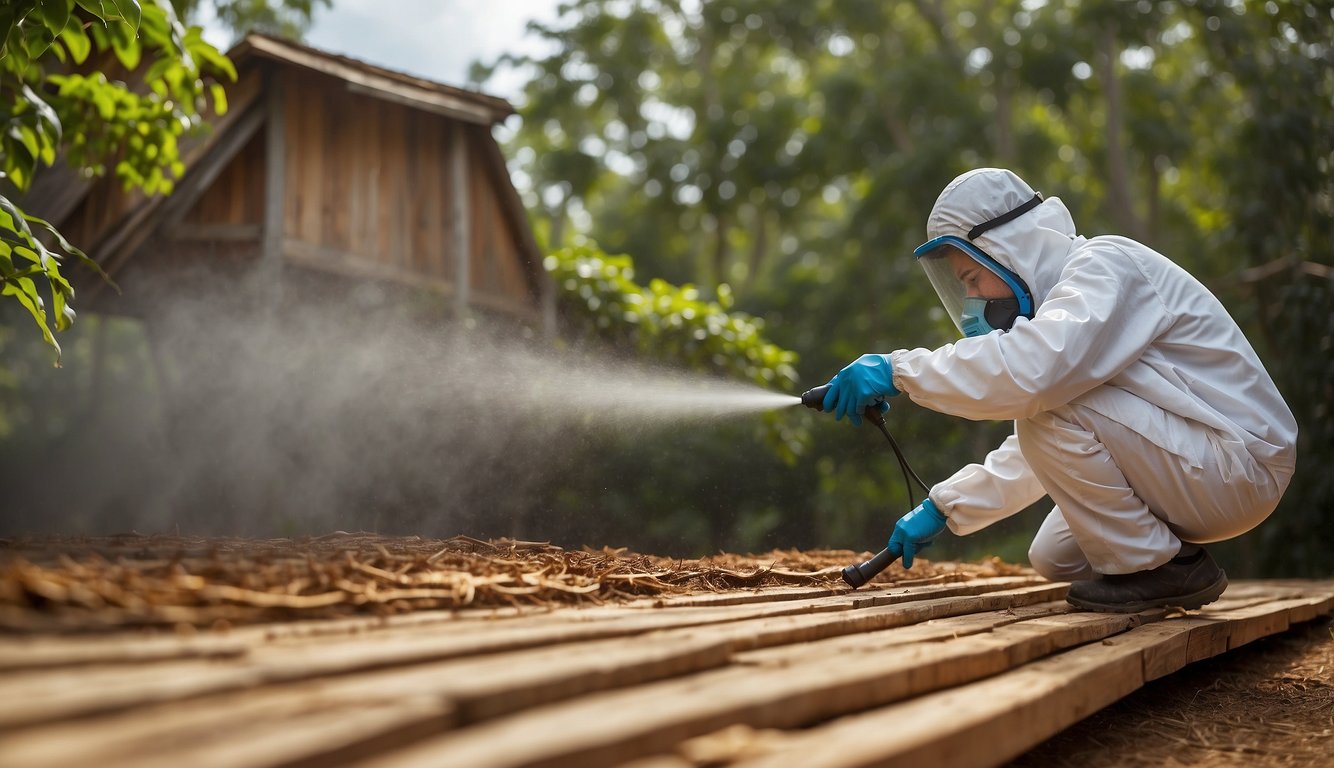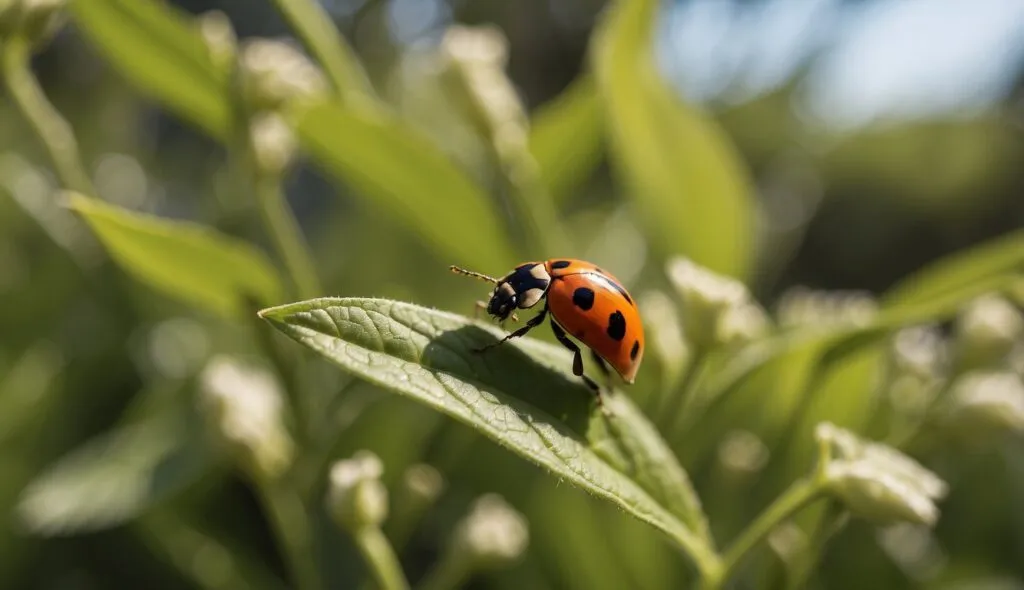Termites can cause significant damage to homes and other structures, making termite control a crucial aspect of property maintenance. In our article, we will explore eco-friendly termite control methods that are effective in managing termite infestations while minimizing environmental impact. We will delve into preventive measures, treatment options, and the role of professional pest control services in addressing termite issues.

Understanding the behavior and habits of termites is essential in implementing effective preventive measures and early detection strategies. By gaining insight into the factors that attract termites and the warning signs of an infestation, property owners can take proactive steps to protect their homes. Additionally, we will discuss eco-friendly termite treatment options that prioritize sustainability and environmental responsibility, offering viable alternatives to traditional chemical-based solutions.
Table of Contents
Key Takeaways
- Understanding termite behavior and early detection are crucial for effective termite control.
- Eco-friendly termite treatment options provide sustainable alternatives to traditional methods.
- Professional pest control services play a vital role in managing termite infestations while minimizing environmental impact.
Understanding Termites and Infestations
Termites are social insects that feed on cellulose, which is found in wood, plants, and other organic materials. They play an important role in breaking down dead plant material in the environment, but can also cause significant damage to homes and other structures if left unchecked.
Species and Behavior
There are over 2,700 species of termites worldwide, but only a few of these are considered pests in the United States. The most common species of termites in the US are subterranean termites, which live in underground colonies and build mud tubes to travel above ground in search of food. Another common species is drywood termites, which live inside wood and do not require contact with soil.
Termites are social insects that live in large colonies, with each individual having a specific role to play in the colony. The queen is responsible for laying eggs, while workers are responsible for foraging for food and maintaining the nest. Soldiers are responsible for defending the colony against predators.
Signs of Infestation
It can be difficult to detect a termite infestation until significant damage has already been done. However, there are a few signs that can indicate the presence of termites. Discarded wings around windows and doors can indicate that termites have swarmed in the area. Mud tubes, which are narrow tunnels made of mud, can be found on walls, foundations, and other surfaces. These tubes are used by subterranean termites to travel above ground. Termite droppings, which look like small piles of sawdust, can also indicate the presence of termites.
If you suspect that you have a termite infestation, it is important to contact a pest control professional as soon as possible. They can help identify the extent of the infestation and recommend treatment options that are safe and effective.
Preventive Measures and Early Detection

As with any pest control strategy, preventing termites from infesting your home is the best approach. By implementing preventive measures and early detection techniques, we can minimize the potential financial and structural consequences of termite damage.
Physical Barriers and Regular Inspections
One of the most effective ways to prevent termite infestations is to install physical barriers. These barriers can include stainless steel mesh, sand, or crushed rock. By placing these barriers around the perimeter of your home, you can prevent termites from entering the structure.
Regular inspections are also crucial in detecting termite activity early. We recommend conducting inspections at least once a year, especially in areas where termites are prevalent. During inspections, we look for signs of termite activity, such as mud tubes, damaged wood, and discarded wings.
Environmental Considerations
Controlling the environment around your home can also help prevent termite infestations. Moisture control is key, as termites are attracted to damp environments. We recommend fixing any leaks or water damage immediately, and ensuring proper ventilation in areas such as attics and crawl spaces.
Wood-to-soil contact should also be minimized, as this provides an easy entry point for termites. We recommend keeping firewood and other wooden materials at least 20 feet away from the home, and using concrete or steel supports for decks and other structures.
By implementing these preventive measures and conducting regular inspections, we can minimize the risk of termite infestations and protect our homes in an environmentally conscious manner.
Termite Treatment Options
When it comes to termite treatment, there are several options available. In this section, we will discuss the two main categories of termite treatments: chemical treatments and natural and eco-friendly solutions.
Chemical Treatments
Chemical treatments are the most common type of termite treatment. They involve the use of chemicals to kill or repel termites. The most popular chemical treatments include liquid termiticides and bait stations.
Liquid termiticides are applied to the soil around the foundation of a home or building. The chemicals in the termiticide create a barrier that termites cannot cross. This type of treatment is effective in preventing termites from entering a structure.
Bait stations are another popular chemical treatment. These stations are placed around the perimeter of a home or building. The bait inside the station contains a slow-acting poison that termites carry back to their colony. Over time, the poison will kill the entire colony.
Natural and Eco-Friendly Solutions
If you are looking for an eco-friendly termite control option, there are several natural solutions available. These solutions include heat treatment, orange oil, and boric acid.
Heat treatment involves heating the affected area to a temperature that is lethal to termites. This treatment is effective in killing termites without the use of chemicals.
Orange oil is a natural oil that is extracted from orange peels. It is effective in killing termites on contact. This treatment is safe for humans and pets and does not harm the environment.
Boric acid is a natural mineral that is effective in killing termites. It is commonly used in combination with other natural treatments to create an effective termite control program.
In conclusion, there are a variety of termite treatment options available. Chemical treatments and natural and eco-friendly solutions are the two main categories of termite treatments. When choosing a treatment option, it is important to consider the effectiveness of the treatment, the safety of the treatment for humans and pets, and the impact of the treatment on the environment.
Professional Pest Control Services

When it comes to termite control, hiring a pest control company is often the most effective solution. However, it’s important to choose the right company to ensure that the job is done correctly. Here are some factors to consider when choosing a pest control company.
Choosing the Right Company
First and foremost, make sure that the company you choose is licensed and insured. This will ensure that the professionals who come to your home are trained and qualified to perform termite inspections and treatments.
Another important factor to consider is the company’s reputation. Look for reviews and testimonials from previous customers to get a sense of the company’s level of professionalism and quality of work.
It’s also a good idea to choose a company that specializes in termite control services. This will ensure that the technicians have the knowledge and experience necessary to effectively treat your termite problem.
Evaluation and Treatment Process
Once you’ve chosen a pest control company, the professionals will begin by inspecting your home for signs of termites. This may include looking for mud tubes, termite droppings, and other indicators of termite activity.
Based on the results of the inspection, the professionals will develop a treatment plan tailored to your specific situation. This may include the use of baits, liquid treatments, or a combination of both.
Throughout the treatment process, the professionals will continue to monitor your home for signs of termite activity. This will ensure that the treatment is effective and that your home remains termite-free.
Overall, hiring a professional pest control company is often the best way to effectively control a termite infestation. By choosing the right company and following the proper evaluation and treatment process, you can protect your home from these destructive pests.
Conclusion
In conclusion, we have learned that eco-friendly termite control methods offer a safe and sustainable alternative to chemical treatments. The use of natural control methods such as beneficial nematodes, cardboard traps, essential oils, and DIY techniques can effectively address termite infestations while being gentle on the environment.
We have also discovered that preventing termite infestation is key to reducing the need for control methods. By understanding termite behavior and implementing prevention strategies such as removing wood piles, fixing leaks, and sealing cracks, homeowners can reduce the risk of termite infestation.
It is important to note that comprehensive information and authoritative content are vital when it comes to termite control. Homeowners should seek out reliable sources of information to ensure that they are using effective and safe control methods.
Overall, we believe that eco-friendly termite control is a win-win situation for everyone involved. Not only does it protect homes from these destructive pests, but it also contributes to the preservation of our beautiful planet. With the right knowledge and tools, we can all play a part in creating a sustainable and healthy environment for generations to come.
Frequently Asked Questions
What are the most effective natural remedies for termite control?
We recommend using plant-based oils, such as orange oil or neem oil, as they contain compounds that are toxic to termites while being safe for the environment. Another natural remedy is using diatomaceous earth, which is a non-toxic powder that can be sprinkled in areas where termites are active. However, it’s important to note that natural remedies may not be as effective as chemical treatments and may require more frequent applications.
How does Sentricon compare to other eco-friendly termite treatments?
Sentricon is an effective and eco-friendly termite treatment that uses bait stations to eliminate termite colonies. It’s considered a more sustainable option than traditional liquid treatments, which can be harmful to the environment. The active ingredient in Sentricon is also non-toxic to humans and pets, making it a safe choice for homes with children or animals.
What are the safety considerations when using eco-friendly termite control methods?
While eco-friendly termite control methods are generally considered safe for the environment and humans, it’s important to follow the manufacturer’s instructions carefully. Some natural remedies, such as essential oils, can be harmful if ingested or applied directly to the skin. It’s also important to wear protective gear, such as gloves and a mask, when applying any type of termite treatment.
Are there any non-toxic alternatives for professional termite extermination?
Yes, there are several non-toxic alternatives for professional termite extermination. Some companies use heat treatments or freezing techniques to eliminate termites without using chemicals. Another option is electrocution, which involves using electricity to kill termites. These methods may be more expensive than traditional chemical treatments, but they are considered safer and more environmentally friendly.
How can I prevent termite infestations using environmentally friendly practices?
To prevent termite infestations using environmentally friendly practices, we recommend reducing moisture in and around your home, sealing any cracks or gaps in your foundation, and removing any wood debris or cellulose materials from your yard. You can also use termite-resistant materials, such as concrete or steel, when building or renovating your home.
What are the long-term effects of using green termite control solutions?
Green termite control solutions are generally considered safe for the environment and humans, and they can be just as effective as traditional chemical treatments. However, it’s important to note that some natural remedies may require more frequent applications than chemical treatments, which could be more costly in the long run. Additionally, some green solutions may not be as effective in extreme infestations.


